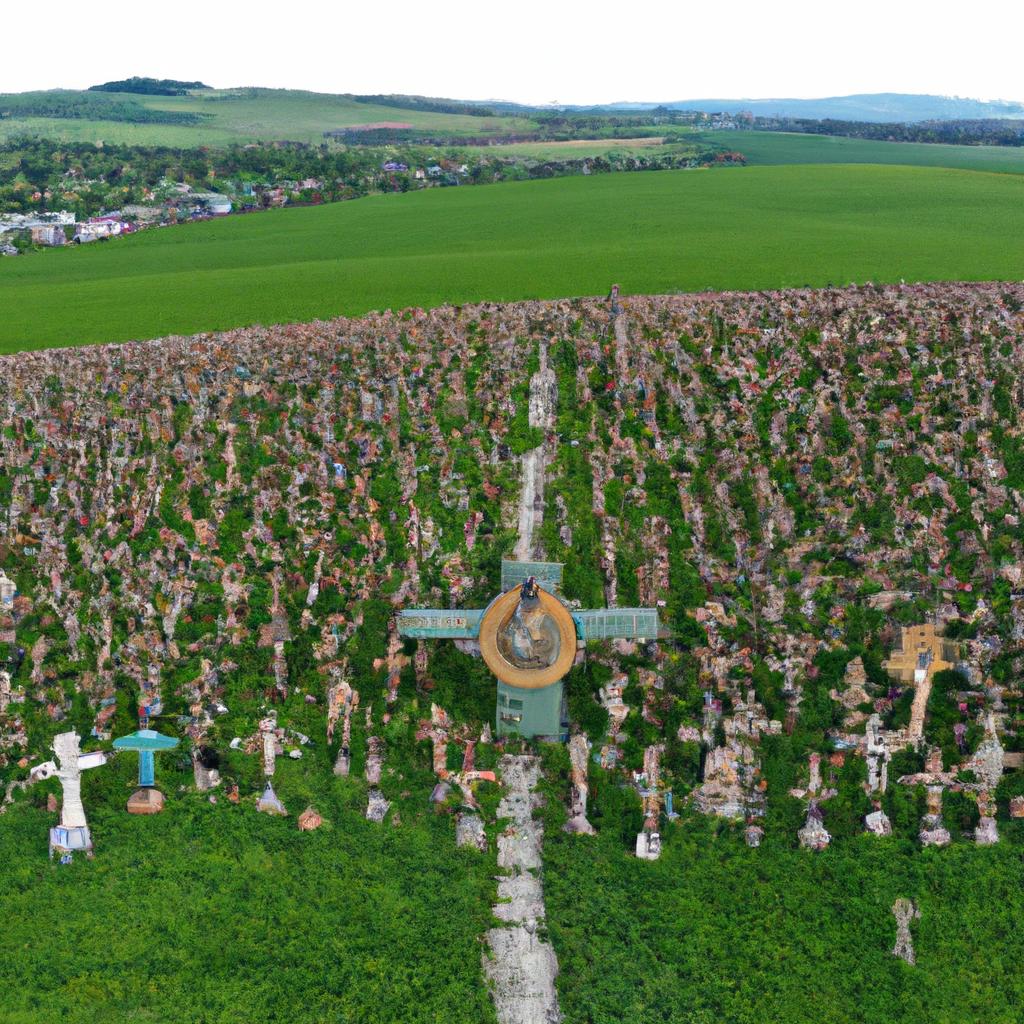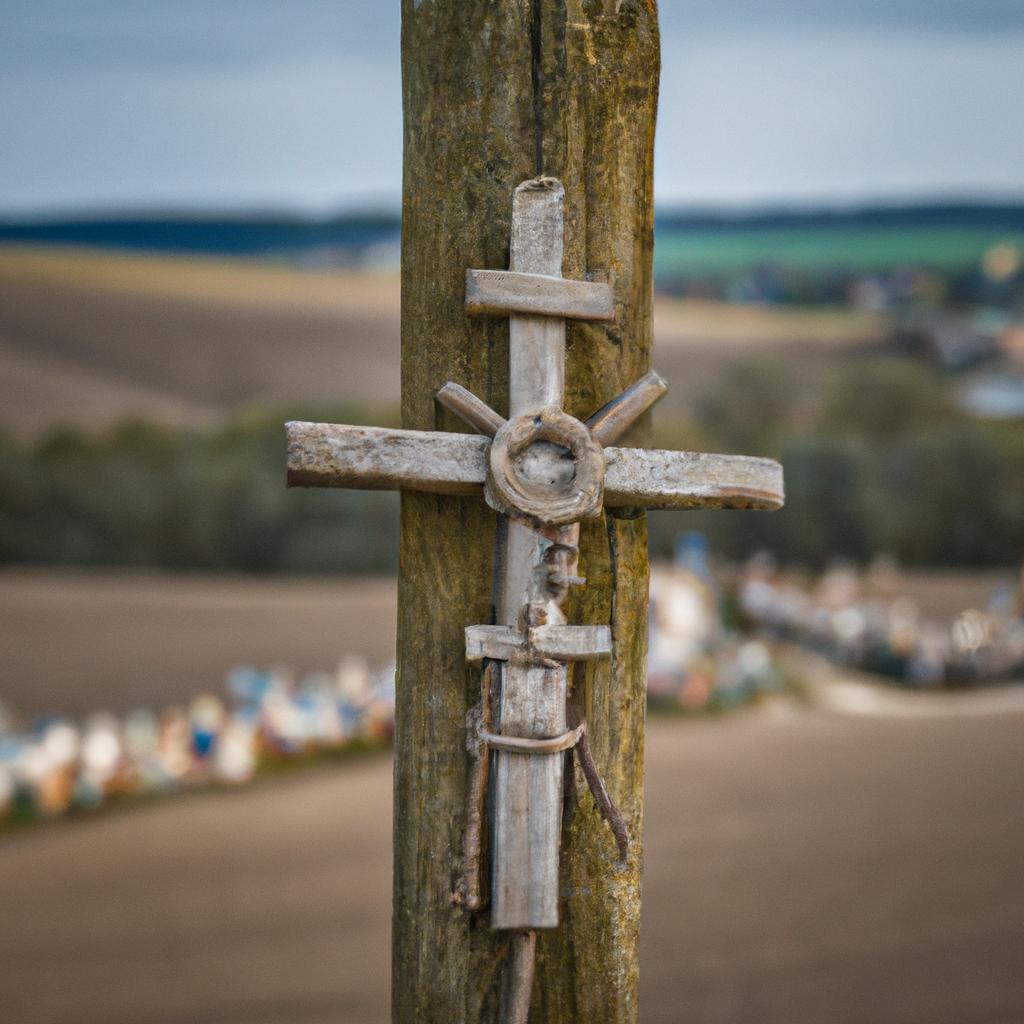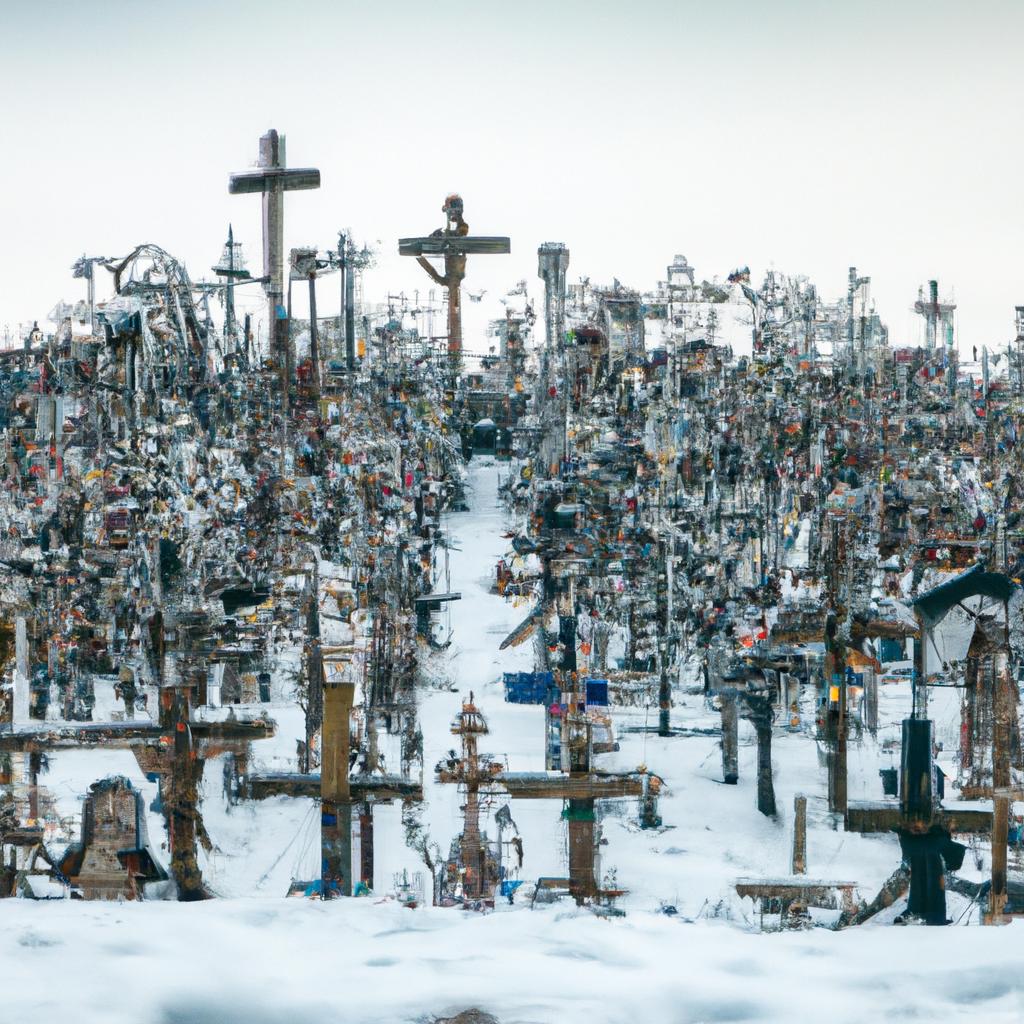Introduction

The Hill of Crosses in northern Lithuania, near the city of Šiauliai, is a pilgrimage site like no other. With an estimated 100,000 crosses and crucifixes adorning the hill, it serves as a remarkable symbol of faith and national identity for the Lithuanian people. Dating back to the early 1800s, the Hill of Crosses has withstood the test of time and become an enduring testament to the unwavering spirit of the Lithuanian people.
Significance of the Hill of Crosses

Religious significance of the Hill of Crosses
For many Lithuanians, the Hill of Crosses holds deep religious significance. It is a sacred site where pilgrims, especially Catholics, flock to offer prayers and leave offerings. Each cross on the hill represents a heartfelt prayer or wish, and it is believed that by leaving a cross, blessings and good luck will come their way.
Cultural significance of the Hill of Crosses
Beyond its religious importance, the Hill of Crosses is also a symbol of Lithuanian national identity and resistance to foreign powers. Despite repeated attempts to bulldoze the site during the Soviet occupation, the Lithuanian people demonstrated their unyielding faith and patriotism by rebuilding it time and again. Today, the Hill of Crosses stands as a symbol of the resilience and determination of the Lithuanian people, showcased in their art, literature, and their unwavering spirit.
Origin of the Hill of Crosses

The history behind the creation of the Hill of Crosses
The exact origins of the Hill of Crosses are shrouded in mystery, but legends trace its beginnings to the early 1800s. It is said that grieving families placed the first crosses on the hill to commemorate loved ones lost during the Lithuanian Uprising of 1831. Another legend suggests that the crosses were erected as a protective measure against a cholera outbreak. Regardless of its origins, the Hill of Crosses quickly transformed from a place of mourning into a site of pilgrimage, where people expressed their faith and sought blessings.
The evolution of the Hill of Crosses over time
Over the years, the Hill of Crosses has evolved, with new crosses added annually. In the early 1900s, it became a powerful symbol of Lithuanian national identity and resistance. Despite repeated attempts at destruction, including bulldozing during the Soviet occupation, the Lithuanian people’s determination prevailed. Today, the Hill of Crosses attracts visitors worldwide, drawn by its religious and cultural significance. It stands as a poignant reminder of Lithuanian identity and the indomitable spirit of its people.
What to expect when visiting the Hill of Crosses

The experience of visiting the Hill of Crosses
Visiting the Hill of Crosses is a deeply emotional and unique experience. Nestled in the serene Lithuanian countryside, the site invites visitors to wander through thousands of crosses and crucifixes left by pilgrims over the years. Many describe the experience as spiritual, evoking a sense of peace and tranquility. Some visitors leave their own crosses or other offerings, adding to the ever-growing collection that blankets the hill.
Guided tours and amenities available
For those seeking a deeper understanding of the site’s history and significance, guided tours led by knowledgeable guides are available. These tours provide insights into the religious and cultural importance of the Hill of Crosses. Additionally, visitors can explore amenities such as a gift shop, offering crosses and other mementos. The site welcomes visitors year-round, with the summer months being the perfect time to savor its beauty.
The Hill of Crosses in popular culture
The Hill of Crosses in literature and film
The Hill of Crosses has made its mark in the realm of literature and film. Jonas Avyžius’s novel, “The Invisible Front,” depicts Lithuanian partisan resistance during the Soviet occupation, prominently featuring the Hill of Crosses. Similarly, the 1961 film “The Hammer and the Cross” portrays the Lithuanian struggle for independence and highlights the significance of the Hill of Crosses.
The impact of the Hill of Crosses on Lithuanian tourism
The Hill of Crosses has become a sought-after tourist destination, alluring visitors from worldwide. Its religious and cultural significance, combined with a captivating history, have made it an integral part of experiencing Lithuanian culture. According to the Lithuanian Department of Tourism, over 200,000 visitors annually contribute to the country’s economy. Furthermore, the Hill of Crosses has played a vital role in promoting Lithuanian culture and history globally, enriching awareness of the nation’s heritage.
Conclusion
The Hill of Crosses stands as a powerful symbol of faith and national pride for the Lithuanian people. It embodies their resilience and unwavering spirit, evident in the face of adversity. Despite its tumultuous history, the Hill of Crosses continues to thrive as a significant part of Lithuanian culture. TooLacks invites everyone to experience the mesmerizing beauty and profound significance of the Hill of Crosses, a testament to the enduring power of faith and national identity.



